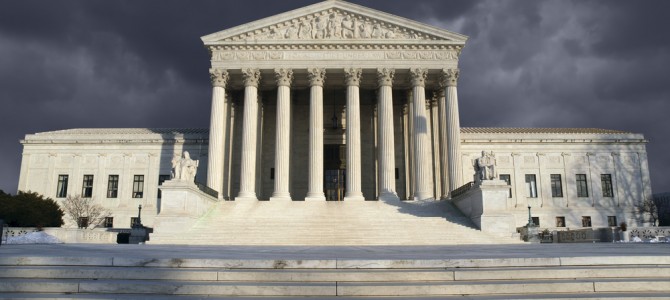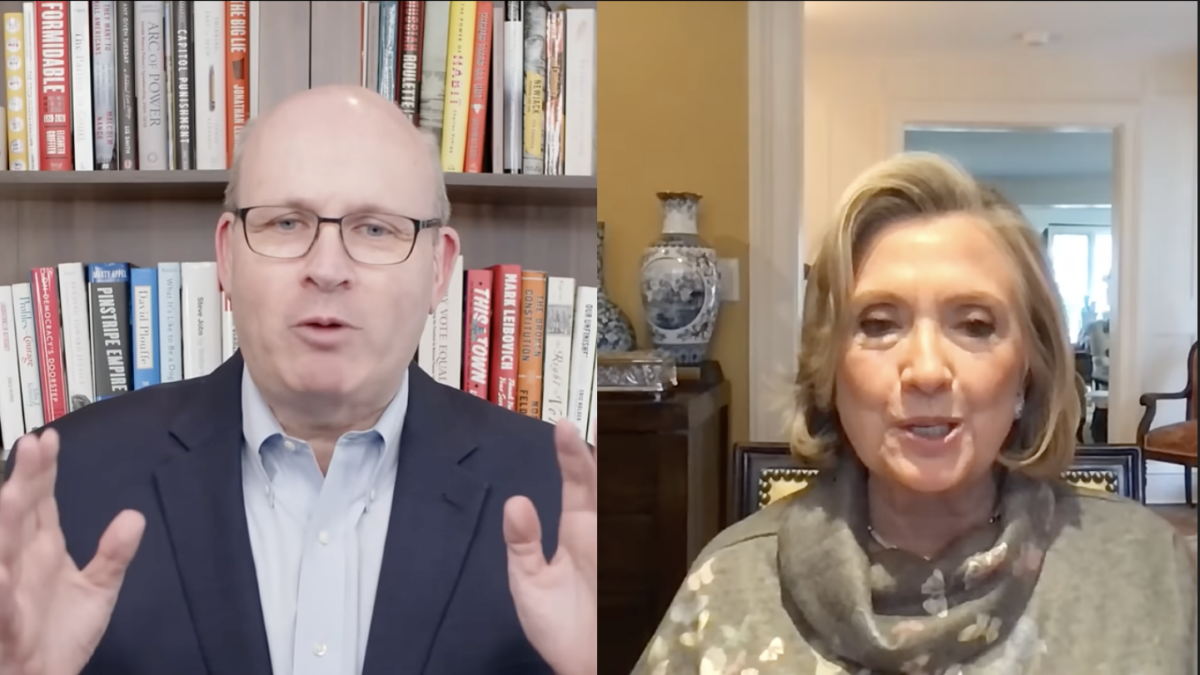
Americans are beginning to lose confidence in the Supreme Court. Traditionally, the court has been unique among our political institutions in that Americans tend to have more confidence in it than they do in Congress or the presidency. Indeed, for decades the judiciary as a whole has enjoyed greater public trust than the other branches of government.
That’s beginning to change. Last fall, the court’s disapproval rating hit a new high of 50 percent, continuing a long decline from favorable opinion ratings as high as 77 percent in the 1990s. Such ratings have of course always been somewhat partisan. Republican views of the court plummeted after recent decisions on same-sex marriage and the Affordable Care Act, while Democrats’ opinion of the court improved.
But something beyond mere partisanship is at play. Americans increasingly view the Supreme Court not as a revered body of judges considering questions of law, but as ideologues engaged at the front lines of America’s culture wars. Last year, a Pew poll noted a major shift in how Americans view the Supreme Court’s ideology, with nearly as many respondents saying the court is liberal (36 percent) as it is middle-of-the-road (39 percent). At the same time, the number of those who say the court is conservative (18 percent) declined sharply to its lowest point since 2007.
Monday’s raft of contradictory opinions helps explain why this is happening. If Americans increasingly don’t believe the Supreme Court cares all that much about matters of law, perhaps it’s because the court’s rulings increasingly appear to be motivated by politics and preferred policy outcomes rather than the rule of law or even consistent legal reasoning. Taken together, the Monday decisions make clear that the court’s liberal majority favors some rights over others, and will say just about anything to achieve the outcome it desires.
The Non-Logic of the Court’s Abortion Decision
Consider the big abortion ruling in Whole Woman’s Health v. Hellerstedt, which blocked parts of a Texas law designed to impose more stringent regulations on abortion clinics. Specifically, it blocked two provisions of the 2013 Texas law, one that required abortion clinics to meet the standards of an ambulatory surgery center and one that required physicians performing abortions to have admitting privileges at a nearby (within 30 miles) hospital.
These requirements no doubt held abortion clinics to a higher standard of care than previous state regulations did. But of course that was the point, even if it meant some clinics would have to close, as some subsequently did. The Texas legislature passed the law in the wake of the trial of Kermit Gosnell, the Philadelphia abortionist who ran a veritable house of horrors, severing the spines of infants after they were born, clogging toilets with human remains, operating on women with dirty instruments, and actually butchering mothers and children alike. In May 2013, a jury convicted Gosnell on three counts of murder, one count of involuntary manslaughter, and numerous lesser counts. He was sentenced to life in prison without the possibility of parole.
The timing of his conviction is important. The Texas law was introduced in a special legislative session called after Gosnell’s trial and conviction, in June 2013. Lawmakers explained at the time that the new regulations were to ensure something like Gosnell never happened in Texas. That of course is the entire point of a lawmaking body, to decide how best to protect the lives and liberties of the people in its jurisdiction.
In its ruling Monday, the majority opinion by Justice Breyer conceded “Gosnell’s behavior was terribly wrong.” But then Breyer made an astonishing claim that seemingly repudiates every regulatory scheme from gun control laws to speed limits. As bad as Gosnell was, Breyer wrote, “there is no reason to believe that an extra layer of regulation would have affected that behavior. Determined wrongdoers, already ignoring existing statutes and safety measures, are unlikely to be convinced to adopt safe practices by a new overlay of regulations.”
With legal reasoning like that, it’s hard to believe the Supreme Court would uphold state regulations on just about anything. Yet the majority justified its position on the basis that the Texas rules amounted to an “undue burden” on women exercising their right to an abortion. In a blistering dissent, Justice Clarence Thomas attacked the very basis of the majority’s logic:
The majority’s furtive reconfiguration of the standard of scrutiny applicable to abortion restrictions also points to a deeper problem. The undue-burden standard is just one variant of the Court’s tiers-of-scrutiny approach to constitutional adjudication. And the label the Court affixes to its level of scrutiny in assessing whether the government can restrict a given right—be it ‘rational basis,’ intermediate, strict, or something else—is increasingly a meaningless formalism. As the Court applies whatever standard it likes to any given case, nothing but empty words separates our constitutional decisions from judicial fiat.
Thomas also noted that “the majority’s undue-burden balancing approach risks ruling out even minor, previously valid infringements on access to abortion.” The logical consequence of “second-guessing medical evidence and making its own assessments of ‘quality of care’ issues,” Thomas added, is that “the majority reappoints this Court as ‘the country’s ex officio medical board with powers to disapprove medical and operative practices and standards throughout the United States.’”
The Second Amendment Is Now A Second-Class Right
The court would apply no such “undue-burden balancing approach” to Second Amendment rights in a 6-2 decision involving two Maine men who were barred from owning firearms under federal law because they were convicted of misdemeanor assault under state law. Both petitioners argue the Maine law did not require prosecutors to show that they intentionally used force, and that because their crimes were reckless in nature, their convictions should not bar them from owning firearms.
Thomas, joined by Justice Sotomayor, argued that reckless behavior doesn’t rise to the level of malicious intent meant to trigger the federal weapons ban. In a sole dissent, Thomas noted that the majority’s reasoning “expands [the federal ban]’s sweep into patently unconstitutional territory.” He then gave some poignant examples:
We treat no other constitutional right so cavalierly. At oral argument the Government could not identify any other fundamental constitutional right that a person could lose forever by a single conviction for an infraction punishable only by a fine.
In enacting [the federal firearms law], Congress was not worried about a husband dropping a plate on his wife’s foot or a parent injuring her child by texting while driving. Congress was worried that family members were abusing other family members through acts of violence and keeping their guns by pleading down to misdemeanors… Instead, under the majority’s approach, a parent who has a car accident because he sent a text message while driving can lose his right to bear arms forever if his wife or child suffers the slightest injury from the crash.
Religious Liberty Isn’t Worth the Supreme Court’s Time
Treating some rights as more equal than others is now endemic among Supreme Court justices. Consider a case the court declined to hear this week, about a Washington state law that makes it illegal for pharmacies to refuse to dispense medications for religious reasons. Justice Samuel Alito, joined by Chief Justice John Roberts and Thomas, wrote a dissenting opinion warning that the court’s refusal to hear the case was an “ominous sign” for religious liberty.
At issue in the case is whether privately owned pharmacies can opt out of providing services or medicines that conflict with the owner’s religious beliefs, such as contraceptives or emergency abortifacients. In fact, the state regulation requiring pharmacies to provide “morning-after” contraception is what the challengers in the case, a group of Christian pharmacy owners, say violates their religious freedom. A federal appeals court said the regulations rationally further the state’s interest in “patient safety,” and left it at that, which was apparently good enough for five Supreme Court justices.
“Circuit held that the regulations do not violate the First Amendment, and this Court does not deem the case worthy of our time,” Alito wrote. “If this is a sign of how religious liberty claims will be treated in the years ahead, those who value religious freedom have cause for great concern.”
The Court Is Sinking to the Level of Congress and the White House
So no wonder Americans are beginning to lose confidence in the highest court in the land. Like our other branches of government, the Supreme Court increasingly doesn’t take its duties and responsibilities seriously. President Obama has accustomed us to such behavior. What are Americans to conclude about their government when they see, in the aftermath of a terrorist attack by an avowed follower of the Islamic State, that the president will barely admit it was an “attack” at all, let alone an attack inspired by and carried out in the name of ISIS.
Or when the best response congressional Democrats could muster to the Orlando attack was to stage a campus-style “sit-in” on the floor of the House—not to demand more robust action against ISIS, but to insist on gun-control legislation that would undermine Americans’ constitutional rights under the Second, Fifth, and Fourteenth amendments.
So it is now with the Supreme Court. On major, hot-button social issues like gun control, Obamacare, abortion, and gay marriage, a growing share of Americans don’t really believe the liberal justices of the Supreme Court—and even some supposedly conservative justices—are all that interested in the U.S. Constitution anymore.









